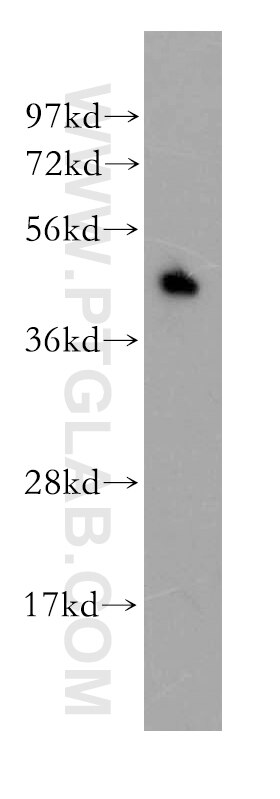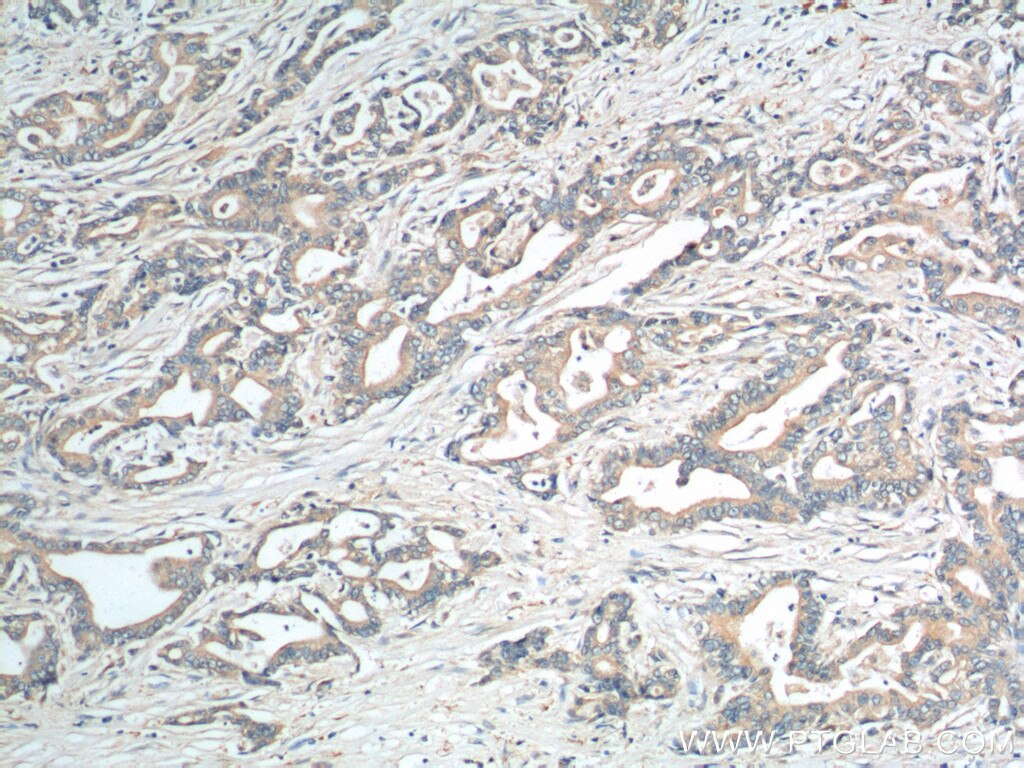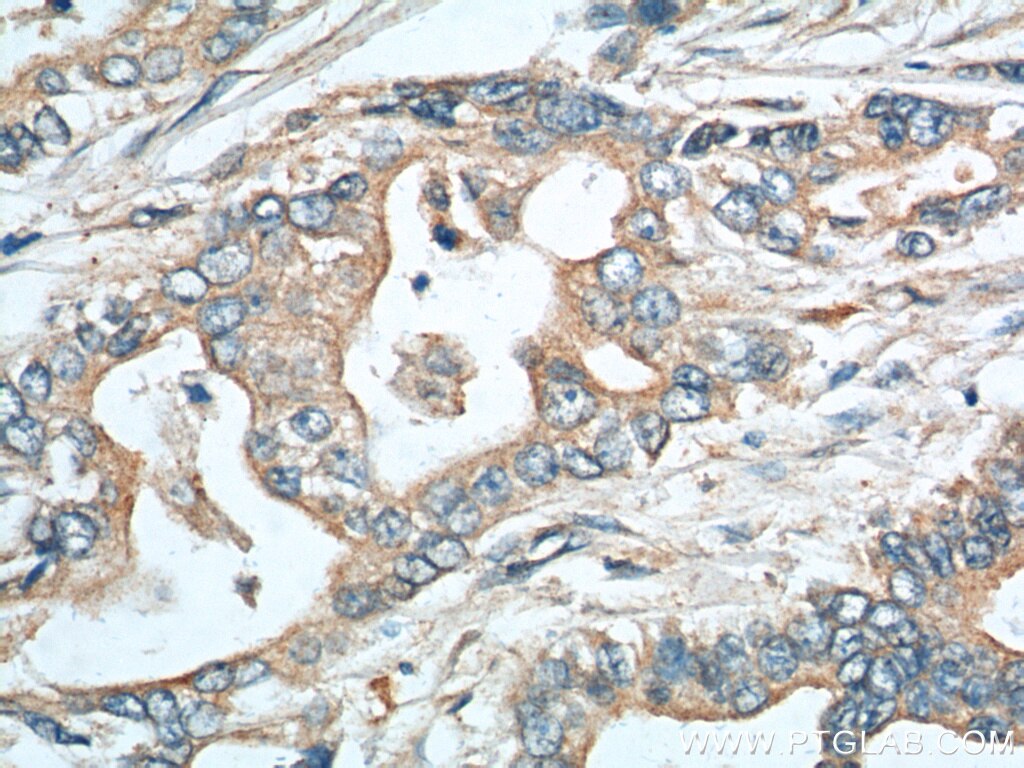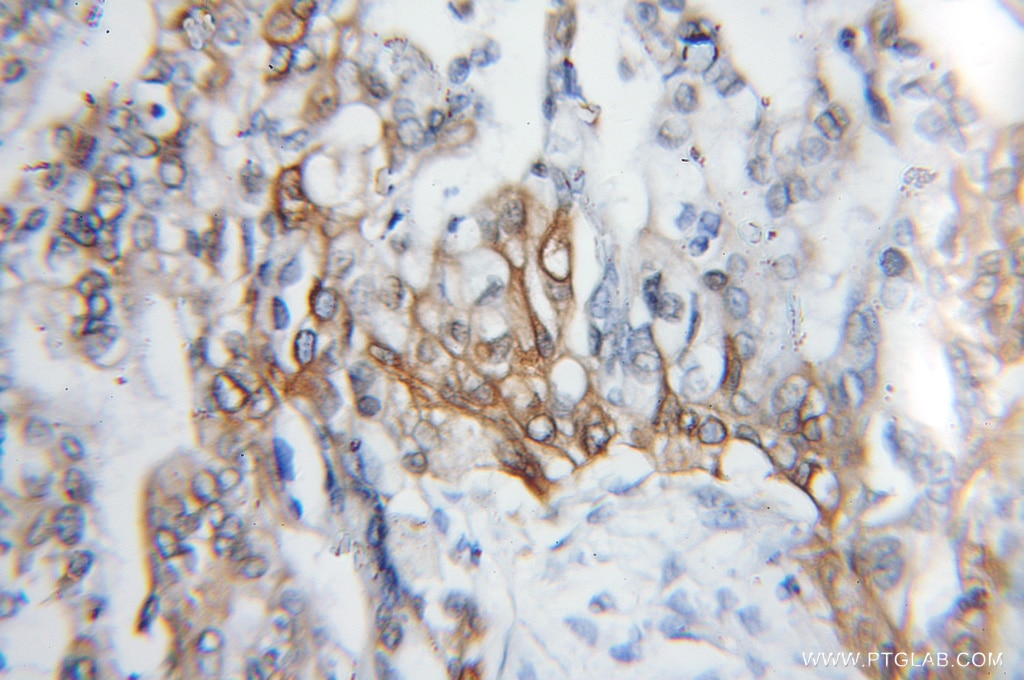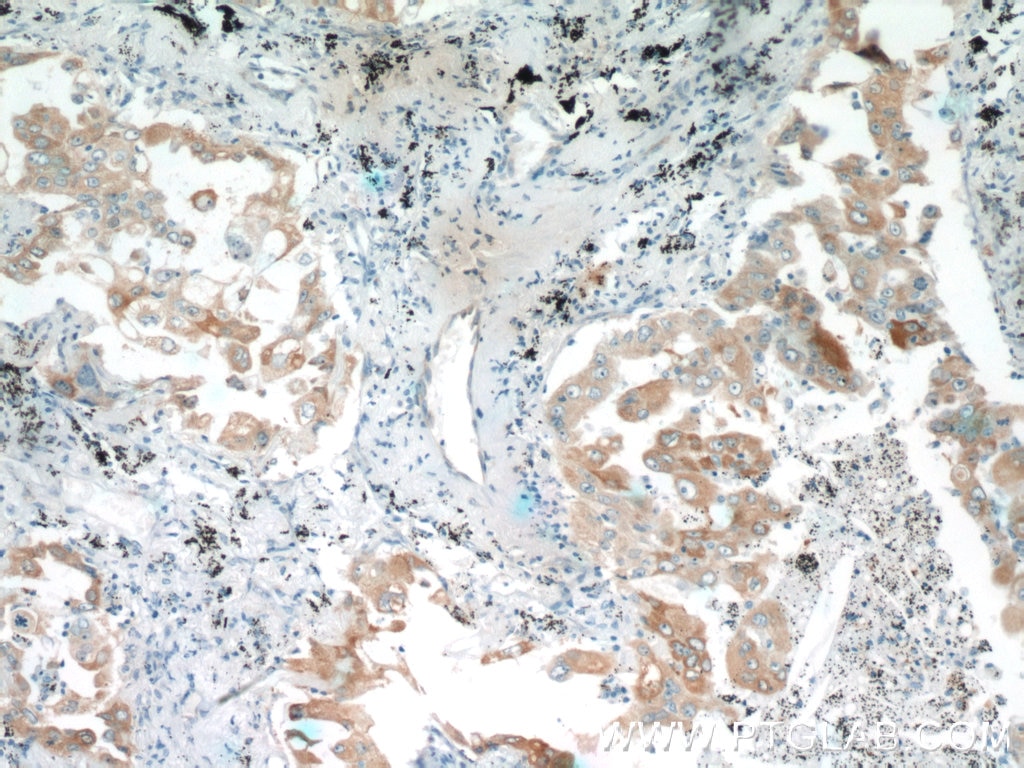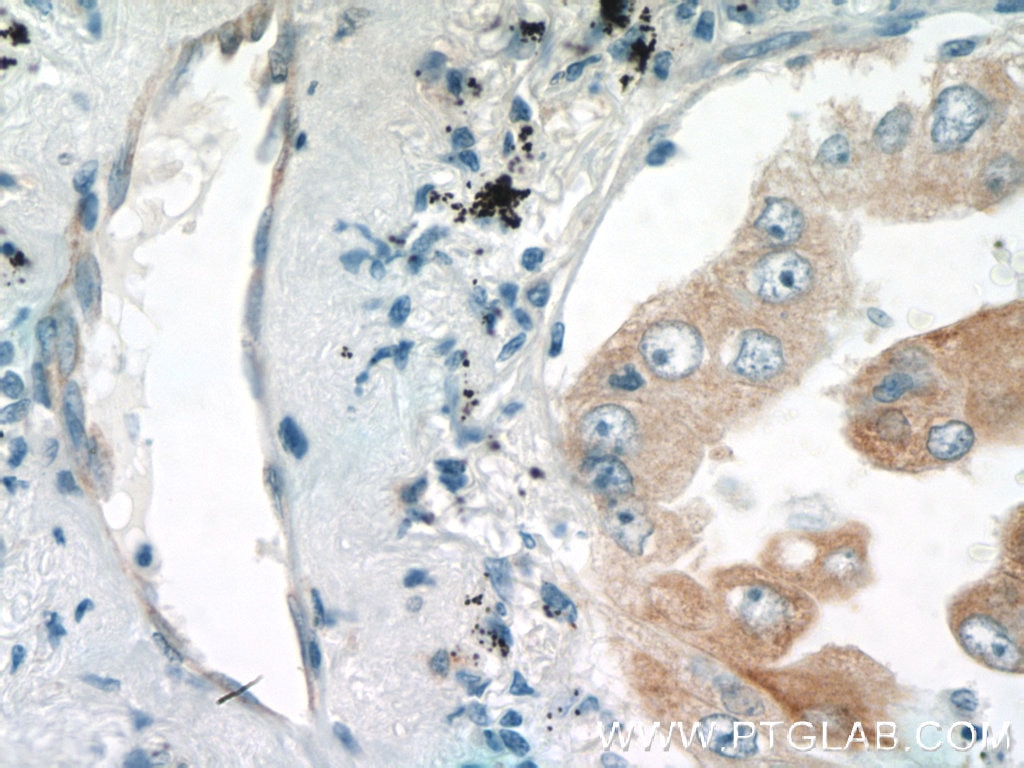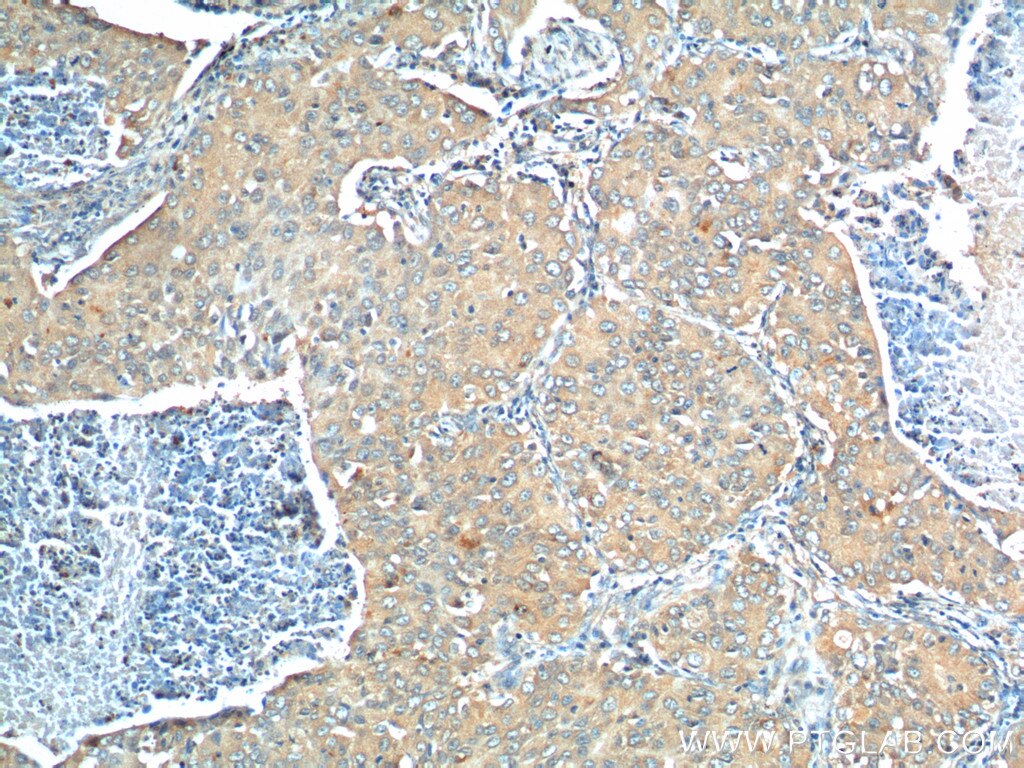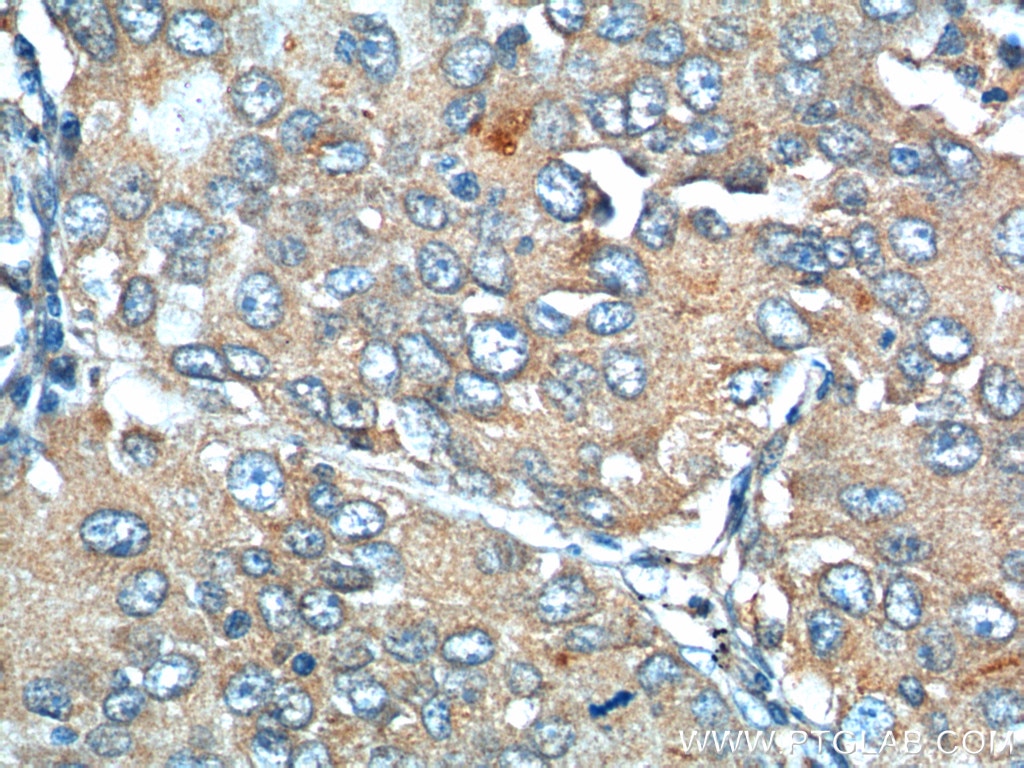EPCR/CD201 Polyklonaler Antikörper
EPCR/CD201 Polyklonal Antikörper für WB, IHC, ELISA
Wirt / Isotyp
Kaninchen / IgG
Getestete Reaktivität
human
Anwendung
WB, IHC, ELISA
Konjugation
Unkonjugiert
Kat-Nr. : 11391-1-AP
Synonyme
Geprüfte Anwendungen
| Erfolgreiche Detektion in WB | humanes Milzgewebe |
| Erfolgreiche Detektion in IHC | humanes Pankreaskarzinomgewebe, humanes Lungenkarzinomgewebe Hinweis: Antigendemaskierung mit TE-Puffer pH 9,0 empfohlen. (*) Wahlweise kann die Antigendemaskierung auch mit Citratpuffer pH 6,0 erfolgen. |
Empfohlene Verdünnung
| Anwendung | Verdünnung |
|---|---|
| Western Blot (WB) | WB : 1:500-1:1000 |
| Immunhistochemie (IHC) | IHC : 1:50-1:500 |
| It is recommended that this reagent should be titrated in each testing system to obtain optimal results. | |
| Sample-dependent, check data in validation data gallery | |
Produktinformation
11391-1-AP bindet in WB, IHC, ELISA EPCR/CD201 und zeigt Reaktivität mit human
| Getestete Reaktivität | human |
| Wirt / Isotyp | Kaninchen / IgG |
| Klonalität | Polyklonal |
| Typ | Antikörper |
| Immunogen | EPCR/CD201 fusion protein Ag1937 |
| Vollständiger Name | protein C receptor, endothelial (EPCR) |
| Berechnetes Molekulargewicht | 238 aa, 27 kDa |
| Beobachtetes Molekulargewicht | 49 kDa |
| GenBank-Zugangsnummer | BC014451 |
| Gene symbol | PROCR |
| Gene ID (NCBI) | 10544 |
| Konjugation | Unkonjugiert |
| Form | Liquid |
| Reinigungsmethode | Antigen-Affinitätsreinigung |
| Lagerungspuffer | PBS with 0.02% sodium azide and 50% glycerol |
| Lagerungsbedingungen | Bei -20°C lagern. Nach dem Versand ein Jahr lang stabil Aliquotieren ist bei -20oC Lagerung nicht notwendig. 20ul Größen enthalten 0,1% BSA. |
Hintergrundinformationen
Protein C receptor (PROCR), also known as activated protein C receptor (APC receptor), EPCR, or CD201, is a transmembrane glycoprotein. EPCR promotes the activation of protein C, which has anticoagulant and cytoprotective effects. EPCR facilitates the activation of protein C by the thrombin-thrombomodulin complex but also facilitates APC-mediated cytoprotective effects on cells that involve the activation of protease-activated receptors (PAR) 1 and 3(PMID: 27207424).
Protokolle
| PRODUKTSPEZIFISCHE PROTOKOLLE | |
|---|---|
| WB protocol for EPCR/CD201 antibody 11391-1-AP | Protokoll herunterladen |
| IHC protocol for EPCR/CD201 antibody 11391-1-AP | Protokoll herunterladenl |
| STANDARD-PROTOKOLLE | |
|---|---|
| Klicken Sie hier, um unsere Standardprotokolle anzuzeigen |
